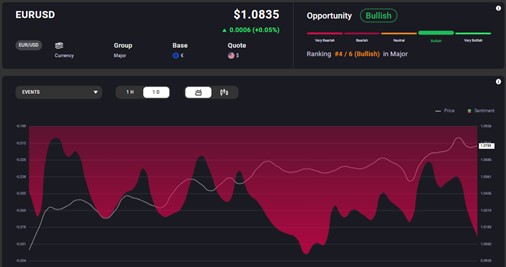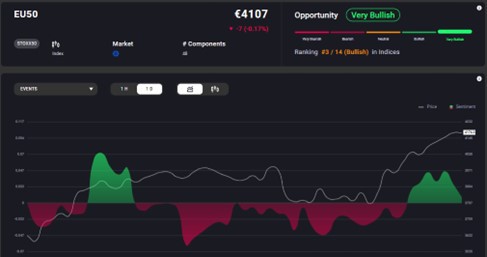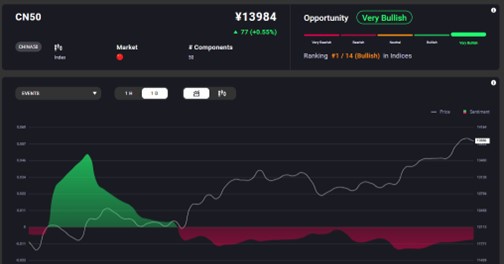The end of the 20th Century and start of the 21st enjoyed a multipolar world. This began with the disintegration of the Soviet Union, a longstanding philosophical and economic powerhouse that counterbalanced the might of post-war United States. It wasn’t just the tumbling of the USSR that did it. The formation and growth of the European Union and the rapidly growing and modernising Chinese economy played a key role.
Then came 2020. The EU hit a rough patch with Brussels facing the fallout from Brexit, the Russian invasion of Ukraine, the aftermath of the covid-19 pandemic, record high inflation coming in from the US, and resurgent debt levels. For many, a European recession is just around the corner, which calls into question its influence on the shaping of the post-pandemic world order. If the EU loses ground, we stand to reacquaint ourselves with a world influenced by two economic superpowers – this time the US and China.
Where is the EU Headed?
The worry heading into winter for the EU was whether their gas supply would be able to meet peak demand, following Russia more than halving gas deliveries. Due to an unexpectedly mild winter and supplies from other countries, the EU was able to increase gas inventories by a record level in 2022. However, the energy shortage concerns have not completely vanished, as an escalation in hostilities with Russia or a surge in demand from a recovering China or other Asian economies could once again put the EU in a precarious position.
Unlike the US, interest rates in the EU are still relatively low. And there are billions in fiscal stimuli planned for 2023. The ECB has demonstrated a less hawkish stance than the Fed and is likely to wait for more economic activity data before continuing rate hikes. The Next Generation EU recovery plan is expected to ramp up significantly and members have already announced an equivalent of 5% of GDP in business and household support. The EURUSD, which plunged to parity earlier in 2022, reached its highest since April due to a strengthening European economy and the Fed easing its pace of rate hikes after the CPI print came in-line with expectations. Against this backdrop, investor sentiment for the EURUSD remains positive, as can be seen on Acuity’s AssetIQ widget.
The EU does remain vulnerable. Inflation is a woe waiting to be addressed. There are also countries with a high level of public debt, such as Italy which has a debt-GDP ratio of over 150%. Countries like Sweden and Norway also have high levels of household debt relative to GDP and are likely to face currency weakening as a result.
While the sentiment for EU remains positive, investors may look for companies that could pass on the cost of inflation to its customers, such as energy and other non-discretionary goods.
Keeping the Balance
While the EU was impacted in 2022, it is not the only economy facing depressive headwinds buffeting the world economy. The Chinese economy may not face as much inflation as its peers (CPI YoY 1.8% in December), but it still has many structural weaknesses. Among this is a decline in house prices, a concerning feature as 70% of the average Chinese household’s savings is tied up in property. The Chinese economy is also expected to have significantly missed its growth targets in 2022 and has little room for stimulus. While zero-covid policies have been reversed, companies are actively exploring other developing countries, including India and Vietnam, to shift their operations.
Other Poles
Even if China and the EU weaken, their economic influence is unlikely to be overtaken by any single country. Instead, it gives opportunities for multiple economies in the developing world to flex their economic muscles.
India, for example, was the fastest growing major economy in 2022, and this trend is expected to continue in 2023. The country has a low household debt to GDP ratio of 14%, giving ample scope for growth in the private lending sector, which may stimulate domestic demand. The country’s equity market also posted a rise of 4% in a year when global stocks lost more than 15% of their value.
Indonesia is another country expected to post healthy growth in 2023. The country’s exports have benefited from the Russian invasion of Ukraine, especially in palm sugar and coal. It also produces 38% of the world’s refined nickel output, an important resource for EV battery production.
Not Yet Bipolar
While the EU is facing an especially rocky road, its weakening is unlikely to leave a Brussels shaped hole in the economic world order without anyone to take its place. The multipolar world order may look different going ahead. But one thing that’s for sure is that we are still in a multipolar world.


